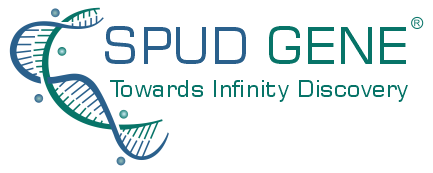A Great Revolution in The Definitive Treatment of Lung Cancer
Lung cancer occurs when abnormal cells have an uncontrolled growth, and these cells cause a tumor in the lung. Despite significant advancements in treating lung cancer, this cancer is still one of the leading causes of death in the world. In 2022, lung cancer alone has caused the death of about 2.09 million people worldwide. The five-year survival rate for people with lung cancer diagnosed early is 56%, this figure drops to only 5% when the cancer is diagnosed late, however, only 16% of lung cancers are diagnosed in the early stages.
Types of Lung Cancer
Lung cancer is histologically classified into two main forms: small cell lung cancer (SCLC) and non-small cell lung cancer (NSCLC), which itself includes several subtypes (adenocarcinoma, squamous cell carcinoma, and large cell carcinoma), each having distinct clinical features and treatment approaches. SCLC accounts for approximately 15% of lung cancer cases, while NSCLC is responsible for almost 85% of lung cancer cases..
Symptoms of Lung Cancer
Some common symptoms of lung cancer include:
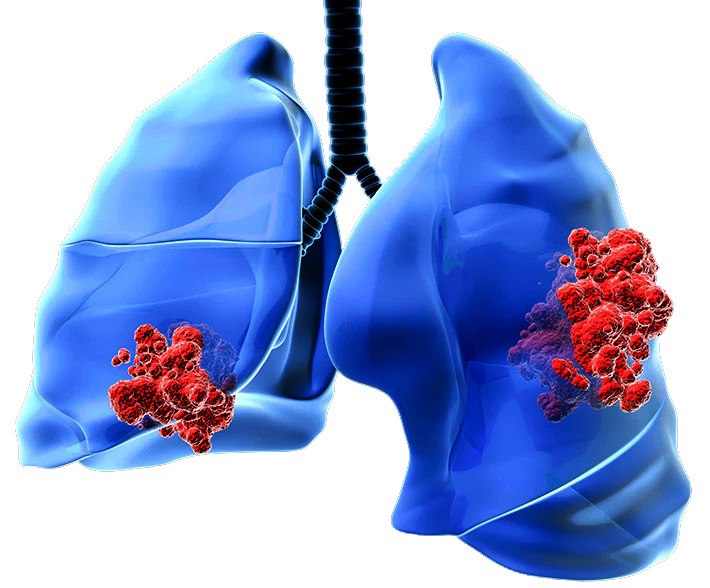
- Persistent cough, lasting for at least 3 weeks (with or without coughing up blood)
- Unintentional weight loss (more than 5% within 6 months)
- Shortness of breath (dyspnea)
- Chest pain (due to tumor invasion of the pleura or chest wall)
- Bone pain (due to metastases, typically in the spine, pelvis, and long bones)
Some common symptoms of lung cancer include:
1. Persistent cough, lasting for at least 3 weeks (with or without coughing up blood)
2. Unintentional weight loss (more than 5% within 6 months)
3. Shortness of breath (dyspnea)
4. Chest pain (due to tumor invasion of the pleura or chest wall)
5. Bone pain (due to metastases, typically in the spine, pelvis, and long bones)
Some common symptoms of lung cancer include:
1. Persistent cough, lasting for at least 3 weeks (with or without coughing up blood)
2. Unintentional weight loss (more than 5% within 6 months)
3. Shortness of breath (dyspnea)
4. Chest pain (due to tumor invasion of the pleura or chest wall)
5. Bone pain (due to metastases, typically in the spine, pelvis, and long bones)

Stages of the Disease
Non-small cell lung cancer (NSCLC), the most common type of lung cancer, has five stages:
Stage 0 : Cancer is confined to the lining of the airways, has not invaded deeper tissues, and has not spread beyond the lungs.
Stage 1 : Cancer is present in the lung tissue but not in lymph nodes or other organs.
Stage 2 : Cancer has spread to nearby lymph nodes on the same side of the chest, invaded the chest wall, diaphragm, or outer lining of the lung.
Stage 3 : Cancer has spread to lymph nodes on both sides of the chest, mediastinum (the area between the lungs), or other structures in the chest such as the heart, esophagus, or trachea.
Stage 4: Cancer has spread to distant organs such as the brain, bones, liver, or supraclavicular lymph nodes.
Small cell lung cancer (SCLC), a less common but more aggressive type of lung cancer, has two stages:
Limited stage : Cancer is confined to one lung and nearby lymph nodes on the same side of the chest.
Extensive stage : Cancer has spread beyond one lung and nearby lymph nodes and may have reached distant lymph nodes or other organs.
Determining the stage of lung cancer helps identify the best treatment options and provide prognostic information for each patient. Treatment may include surgery, chemotherapy, radiation therapy, immunotherapy, targeted therapy, or palliative care. Survival rates and life expectancy in lung cancer patients depend on several factors, including the type and stage of cancer, patient age, overall health, and treatment response.
Limitations of Current Treatments
Limitation of Current Treatments
Despite major advances in the treatment of lung cancer, this cancer is still one of the leading causes of death in the world. Obstacles in designing effective treatments are:
1.Resistance to Treatment: While targeted therapy and immunotherapy have been successful for many patients with lung cancer, some individuals develop resistance to these treatments over time.
2.Heterogeneity of Lung Cancer: Lung cancer is a complex disease with various subtypes and genetic mutations. Personalizing treatment plans based on individual characteristics remains a challenge, especially for patients with rare or less understood mutations.
3.Side Effects: Treatment-related side effects can still be significant and affect a patient’s quality of life.
4.Late-Stage Diagnosis: Despite improvements in early detection, many cases of lung cancer are still diagnosed at an advanced stage.
5.Limited Curative Options for Advanced Disease: For patients with advanced or metastatic lung cancer, achieving a complete cure can be difficult.
6.High Cost of Treatment: Many newer treatments, especially targeted therapy and immunotherapy, can be expensive, creating challenges in ensuring access for all patients.
7.Escape of cancer cells from the immune system
8.Toxicity associated with conventional cancer treatments like radiation therapy and chemotherapy
Chemotherapy can lead to pulmonary toxicity, manifested by symptoms such as cough, fever, dyspnea (difficulty breathing), and hypoxemia (low oxygen levels in the blood). Hair loss, nausea and vomiting, decreased appetite and weight loss, mucositis of the oral and gastrointestinal tract, constipation or diarrhea, fatigue, and increased risk of infection are among the other side effects
9.Inflammatory response: Induction of an inflammatory response , in the body due to treatment with immune checkpoint inhibitors, where the body’s inflammatory response to damaged tissue impairs patient tolerance and diminishes treatment efficacy
10.Surgical complications: including blood clot formation, bronchopleural fistula, chest or lung pain, and lung atelectasis.
The discovery and innovation of a lung cancer treatment that transcends existing limitations while offering unparalleled accuracy and speed across all stages of the disease would be a monumental breakthrough in medical science. Such an advancement would have a profound impact on patient outcomes, healthcare systems, and the overall fight against lung cancer.
Innovating Lung Cancer Treatment by Our Discovery and our Technology
Innovating Lung Cancer Treatment by Our Discovery and our Technology
In our unyielding quest to combat lung cancer, an innovative treatment approach has emerged of science and technology that brings forth the definitive treatment of lung cancer in all stages. Our company is proud to unveil a revolutionary approach that harnesses the power of artificial intelligence for an optimum combination of medication (HOCl nanoparticle), and oxygen to combat lung cancer. At the heart of our transformative treatment lies a personalized medicine approach that tailors therapy to everyone’s unique vital signs. Our intelligent control system, designed by state-of-the-art AI algorithms can process and analyze patient vital signs with unparalleled accuracy and speed, resulting in personalized and precise treatment orders. The treatment process starts with the AI control system issuing instructions for the adjust precise dosage and the optimum combination of Medication (HOCL nanoparticle), and oxygen. Each substance is meticulously delivered to the Lung using state-of-the-art nebulizers with the correct pressure and concentration based on the individual patient’s unique requirements. This groundbreaking method ensures that each patient receives a personalized, optimized regimen, maximizing the potential for success while minimizing side effects.
The Medication: HOCl Nanoparticle
In the quest to revolutionize cancer treatment strategies, our spotlight has attracted an unexpected contender: Hypochlorous Acid (HOCl). This unassuming molecule, recognized for its role in the body’s immune response, has unveiled a fascinating array of properties that hold the potential to redefine the landscape of cancer therapy. As scientific exploration delves deeper into the intricacies of cancer biology, the unique attributes of HOCl appeared as a magic molecule, was captivated our researchers. The mechanisms that underlie HOCl potential to become a transformative force in the ongoing battle against cancer are included:
Oxidative Stress: HOCl is a highly reactive molecule that can generate oxidative stress within cells. Oxidative stress refers to an imbalance between the production of reactive oxygen species (ROS) and the body’s ability to detoxify them. In cancer cells, this oxidative stress can lead to damage to cellular components such as proteins, lipids, and DNA.
Inducing apoptosis (programmed cell death): DNA damage and oxidative stress can activate various apoptotic pathways within the cancer cell. These pathways involve a series of biochemical events that ultimately lead to the activation of caspases, which are enzymes responsible for initiating the apoptotic process that modulate various signaling pathways that regulate cell survival and death. For example, it may affect pathways such as the PI3K/Akt pathway or the NF-κB pathway, which participate in promoting cell survival and inflammation. By interfering with these pathways, HOCl tip the balance towards apoptosis.
Calpain activation: HOCl can activate calpains, which are calcium-dependent proteases. Calpains can cleave a number of proteins that take part in cell survival, such as Bcl-2 and p53. This can lead to the induction of apoptosis.
Autophagy Regulation: Autophagy is a cellular process that involves the degradation and recycling of cellular components. In cancer cells, autophagy can promote cell survival under stress conditions. HOCl modulate autophagy, potentially influencing whether cancer cells undergo apoptosis or survival through autophagy.
Immune Response: Inducing apoptosis in cancer cells stimulates an immune response. Dying cancer cells release signals that attract immune cells to the site of the tumor. These properties enhance the body’s ability to recognize and eliminate cancer cells.
Lysosome rupture: HOCl can rupture lysosomes, which are organelles that contain hydrolytic enzymes. The release of these enzymes into the cytoplasm can damage cell components and trigger apoptosis. these properties make HOCL a safe and effective therapeutic option for the treatment of different cancer types.
Lung cancer is still a formidable global health challenge, demanding innovative therapeutic strategies that can effectively target cancer cells while harnessing the host’s immune defenses. In this pursuit, Hypochlorous Acid (HOCl) has appeared as a promising candidate due to its unique ability to induce apoptosis – programmed cell death – in cancer cells and augment the immune response. The dual mechanism of action, encompassing both direct cytotoxicity and immune stimulation, positions HOCl as a potential groundbreaking intervention in lung cancer treatment. our study started with the comprehensive investigation of HOCl as a potential lung cancer therapy. By leveraging in vitro cell assays and in vivo analyses, we meticulously explored varying concentrations of HOCl to elucidate its impact on cancer cell viability and immune modulation. The exploration of HOCl’s potential as a lung cancer treatment yielded promising and illuminating results. In the in vitro cell assays, a range of HOCl concentrations was evaluated for their impact on lung cancer cell lines. Strikingly, it was seen that HOCl induced a concentration-dependent increase in apoptotic pathways within the cancer cells. This phenomenon was accompanied by a concurrent upregulation of immune-related markers, showing the potential for immune system activation in response to HOCl treatment in a cancer environment. Consistent with the in vitro findings, administration of HOCl at varying concentrations showed a remarkable reduction in tumor growth. Further investigation into the best conditions for HOCl efficacy revealed a compelling correlation between concentration, pH, and cancer cell elimination. These results collectively underscore the multifaceted potential of HOCl as a lung cancer therapeutic. The findings here supplied a springboard for future research endeavors.
A Delivery Approach for Lung Cancer Treatment by HOCl
Our challenges lie not only in the therapeutic agent itself but also in its precise delivery to the lung cancer cells. the next step in our study delves into the intricate realm of targeted delivery by investigating the use of nanoparticles as vehicles to transport and release HOCl in close proximity to lung cancer cells.The focus of this innovation centers on the strategic development of a nanoparticle-based delivery system capable of not only delivering HOCl to the lung but also facilitating its release in close proximity to cancerous cells.In the first phase, various delivery methods were explored, each with their own set of challenges. However, the spotlight eventually turned to nanoparticles, given their potential to overcome the barriers of lung delivery while ensuring spatial proximity to cancer cells. Several iterations of nanoparticle designs were meticulously examined to optimize their ability to nebulize and reach the lung tissue. Notably, the final nanoparticle candidate showed a remarkable ability to be nebulized effectively, ensuring efficient and uniform distribution within the lung. This achievement marked a crucial step forward toward this innovation.The next research phase revolved around evaluating the safety and efficacy of the chosen nanoparticle structure. Rigorous in vitro analyses showed the biocompatibility of the nanoparticle and its potential to effectively release HOCl in a controlled manner. Building upon these promising in vitro findings, in vivo studies were conducted to assess the nanoparticle’s performance within the complex lung microenvironment. The results from the animal studies provided compelling evidence of the nanoparticle’s ability to deliver HOCl to targeted lung regions, further validating its potential as a transformative delivery platform. The pivotal culmination of this investigation centered on loading HOCl into the optimized nanoparticle structure. The successful loading of HOCl into the nanoparticle matrix was achieved, leading to a formulation that showed both stability and controlled release characteristics. We illuminated the remarkable potential of nanoparticle-based delivery systems for transporting and releasing HOCl in proximity to lung cancer cells. Through a nebulization of this nanoparticle, we ensure that the treatment is precisely directed to the cancer site and minimizing side effects.
Together, Let's Defeat Lung Cancer
Join us for advanced lung cancer treatment. Our advanced technologies and professional guidance and support elevate your clinical practice, offering the best outcomes for patients
![[CITYPNG.COM]Lung Lungs Respiratory System Magnifier Fla lung cancer treatment](https://spudgene.com/wp-content/uploads/elementor/thumbs/CITYPNG.COMLung-Lungs-Respiratory-System-Magnifier-Fla-qodxf25b6apxky916z976vbo7eezuhq3bmuovo37is.png)
AI-Regulated Optimum Combination of HOCl-Nanoparticle Based Inhalation and Co-Delivery of Oxygen for Definitive Treatment of Lung Cancer
In the relentless pursuit of innovation within lung cancer treatment, the intersection of innovative science and advanced technology has given rise to a revolutionary approach. As a result of our exploration into hypochlorous Acid (HOCl) delivery via nanoparticles to lung cancer cells, a critical challenge appeared – the delicate balance between therapeutic efficacy and patient safety. The nebulization of HOCl and air into the lung presented unforeseen oxygen saturation fluctuations, necessitating immediate intervention. To address this critical concern, we have harnessed the power of Artificial Intelligence (AI) to design an intelligent control system that not only safeguards patient well-being but also tailors treatment dynamically to each patient’s unique physiological needs.Our intelligent control system is the convergence of sophisticated AI algorithms meticulously designed to seamlessly process and analyze a comprehensive array of patient vital signs. Leveraging the latest advancements in artificial intelligence and medical data science, this innovative system operates in real-time, producing accurate and insightful assessments with exceptional precision and rapidity. Methodologically, the system begins its process by continuously collecting a diverse range of patient vital signs. These encompass a spectrum of parameters, including heart rate, blood pressure, respiratory rate, oxygen saturation levels, and various other clinically relevant metrics. These data points are seamlessly integrated and subjected to an intricate algorithmic framework that thrives on pattern recognition, statistical modeling, and machine learning techniques .Through a process of iterative refinement, the AI algorithms meticulously analyze the amalgamation of vital signs. By finding subtle correlations, anomalies, and trends within the data, the system gains a comprehensive understanding of the patient’s physiological state. This deep insight forms the bedrock for the next prescription of medication orders. The prescribing process is an embodiment of the system’s methodological prowess. Informed by the real-time analysis of vital signs, the intelligent control system formulates precise medication orders with dosages tailored to the patient’s unique physiological requirements. This process is a harmonious fusion of evidence-based medical guidelines, pharmacological principles, and patient-specific data. The results of this methodological synergy are truly remarkable. The intelligent control system can rapidly and accurately find the optimal medication dosages, adapting them to the patient’s ever-evolving condition. By instantaneously responding to fluctuations in vital signs, the system ensures that medication administration stays consistently aligned with the patient’s physiological needs. By seamlessly processing patient vital signs and prescribing medication orders with pinpoint precision and real-time responsiveness, the system elevates patient care to unprecedented levels of accuracy, safety, and effectiveness.
In the face of dynamic oxygen saturation fluctuations induced by nebulized HOCl , our AI system has shown unparalleled efficacy in swift and precise treatment adjustments. Through rigorous testing and real-world application, our AI control system has shown its ability to proactively respond to patient needs, ensuring that oxygen saturation remains within safe and optimal ranges. The intricate orchestration of HOCl modulation, oxygen therapy, and tailored treatment adjustments has created a continuous cycle of care, dynamically adapted to each patient’s unique physiological state. The results achieved through this integration have not only surmounted the challenge of oxygen saturation fluctuations but have also introduced an unprecedented level of personalized and precise lung cancer treatment. The AI-guided approach holds the promise of enhancing treatment outcomes while safeguarding patient well-being in this critical therapeutic context. In conclusion, the fusion of AI-powered intelligence with innovative cancer treatment strategies marks a significant advancement in the field. This approach, as shown by our results, not only addresses critical challenges but also propels us toward a new era of personalized and effective lung cancer therapy
The Stages of Therapy
 Collect Vital Signs
Collecting relevant patient data consisting of vital signs, such as heart rate, blood pressure, respiratory rate, body temperature, oxygen saturation (SpO2) and lung Function.
Collect Vital Signs
Collecting relevant patient data consisting of vital signs, such as heart rate, blood pressure, respiratory rate, body temperature, oxygen saturation (SpO2) and lung Function.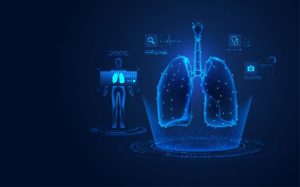 processes and analyzes patient vital signs with unparalleled accuracy and speed.
These data points are seamlessly integrated and subjected to an intricate algorithmic framework that thrives on pattern recognition, statistical modeling, and machine learning techniques. Through a process of iterative refinement, the AI algorithms meticulously analyze the vital signs.
processes and analyzes patient vital signs with unparalleled accuracy and speed.
These data points are seamlessly integrated and subjected to an intricate algorithmic framework that thrives on pattern recognition, statistical modeling, and machine learning techniques. Through a process of iterative refinement, the AI algorithms meticulously analyze the vital signs. Treatment Order Based on Artificial Intelligent
Informed by the real-time analysis of vital signs, the intelligent control system formulates precise medication orders with dosages tailored to the patient’s unique physiological requirements
Treatment Order Based on Artificial Intelligent
Informed by the real-time analysis of vital signs, the intelligent control system formulates precise medication orders with dosages tailored to the patient’s unique physiological requirements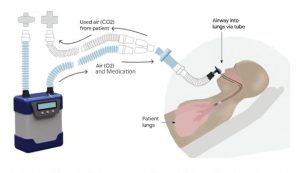 Tumor Removal by Nebulized Medication
When the patient necessitates medication, or oxygen, the AI system based on the respiratory cycle’s volume and selects the appropriate dosage and concentration of the medication accordingly determining and Ordering the suitable nebulization for each element based on the patient’s condition and treatment plan.
Tumor Removal by Nebulized Medication
When the patient necessitates medication, or oxygen, the AI system based on the respiratory cycle’s volume and selects the appropriate dosage and concentration of the medication accordingly determining and Ordering the suitable nebulization for each element based on the patient’s condition and treatment plan.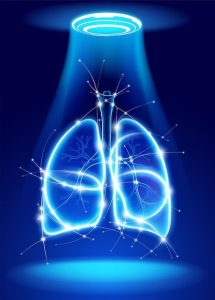
Optimize Treatment Delivery Based on Real-Time Data
Throughout the nebulization process, the AI system continuously monitors the patient’s response and vital signs. If necessary, it can dynamically adjust the pressure settings, medication dosage, or oxygen flow rate to optimize treatment delivery based on real-time data.

Collect Vital Signs
Collecting relevant patient data consisting of vital signs, such as heart rate, blood pressure, respiratory rate, body temperature, oxygen saturation (SpO2) and lung Function.

processes and analyzes patient vital signs with unparalleled accuracy and speed.
These data points are seamlessly integrated and subjected to an intricate algorithmic framework that thrives on pattern recognition, statistical modeling, and machine learning techniques. Through a process of iterative refinement, the AI algorithms meticulously analyze the vital signs.

Treatment Order Based on Artificial Intelligent
Informed by the real-time analysis of vital signs, the intelligent control system formulates precise medication orders with dosages tailored to the patient’s unique physiological requirements

Tumor Removal by Nebulized Medication
When the patient necessitates medication, or oxygen, the AI system based on the respiratory cycle’s volume and selects the appropriate dosage and concentration of the medication accordingly determining and Ordering the suitable nebulization for each element based on the patient’s condition and treatment plan.

Optimize Treatment Delivery Based on Real-Time Data
Throughout the nebulization process, the AI system continuously monitors the patient’s response and vital signs. If necessary, it can dynamically adjust the pressure settings, medication dosage, or oxygen flow rate to optimize treatment delivery based on real-time data.
our revolutionary lung cancer treatment represents the pinnacle of medical innovation. This treatment, unlike any before it, has the extraordinary ability to address the diverse challenges that have historically hindered effective lung cancer managemet .this treatment, utilizing extensive and comprehensive medical information and data, along with clinical experiences, and processing them through cutting-edge technology, relying on the analysis of a large group of Spudgene scientists, and a command and control system based on artificial intelligence, and incorporating unique innovation in the utilization of the HOCl nanoparticle drug delivery system, has achieved an astonishing 92.7% success rate in definitively treating lung cancer at all stages. Furthermore,this therapeutic revolution comes with minimal treatment-related side effects and numerous benefits, including:
Comprehensive Efficacy: Our Definitive Treatment has the remarkable capability to effectively combat lung cancer at any stage. This groundbreaking treatment has witnessed unparalleled success in eliminating cancer cells even in the most advanced stages, including Stage IV lung cancer. Rigorous clinical trials have demonstrated a remarkable 92.7% significance rate in treatment, validating the safety and efficacy of this life-changing therapy
Unparalleled Accuracy : Powered by state-of-the-art diagnostics and molecular profiling, this treatment has pinpoint accuracy in identifying the unique characteristics of each patient’s cancer. It identifies vital signs and other crucial factors with astonishing precision, enabling the customization of therapy. By eradicating guesswork and minimizing trial-and-error, this accuracy vastly improves treatment outcomes.
Rapid Intervention : Time is of the essence in cancer treatment, and this innovation operates with unprecedented speed. From diagnosis to treatment initiation, the streamlined process ensures that patients receive care promptly, maximizing the potential for successful outcomes. Swift and decisive action becomes the norm, allowing patients and healthcare providers to tackle lung cancer head-on, minimizing its impact on the patient’s health and well-being.
Minimized Side Effects : This innovative treatment is designed with a deep understanding of the intricacies of lung cancer biology. As a result, it targets cancer cells while protecting healthy tissues, substantially reducing the often-debilitating side effects associated with conventional treatments. Patients experience fewer disruptions to their daily lives and enjoy an enhanced quality of life throughout their treatment journey.
Global Impact: The discovery of this treatment sets a new standard for lung cancer care worldwide.
Our mission is to revolutionize lung cancer treatment by offering a safe, efficient, and personalized solution for patients at all stages of this devastating disease. We provide hope and healing through innovative technologies, cutting-edge research, and compassionate care.
